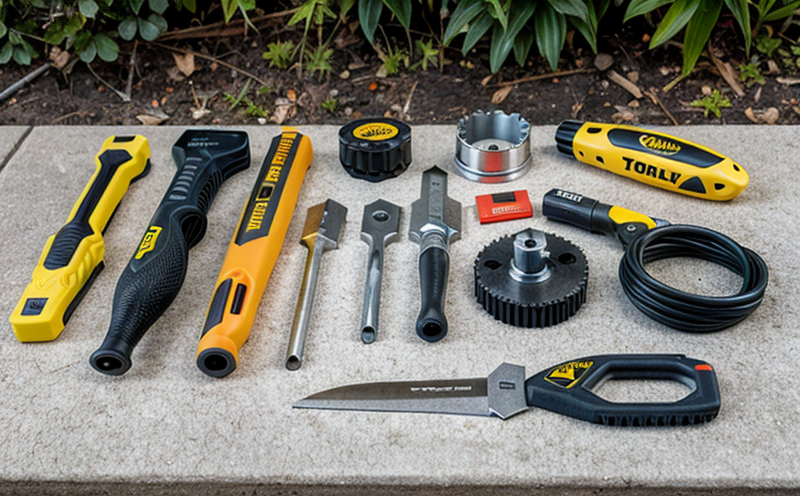Slip Resistance Testing of Tool Handles
In the realm of consumer products and product safety testing, particularly within DIY tools and hardware products, slip resistance testing of tool handles is a critical component. This service ensures that tools do not contribute to accidents or injuries by maintaining safe grip under various conditions. The primary objective is to enhance user safety while adhering to stringent international standards.
Slip resistance testing focuses on the ability of a tool handle to resist slipping when subjected to force and friction. This test evaluates how well the surface interacts with human skin, particularly in wet or dry conditions. The goal is to achieve an acceptable level of grip that minimizes the risk of slips, trips, and falls.
During testing, various factors such as material composition, texture, and finish are considered. Materials like rubber, polyurethane, and silicone are frequently used due to their excellent slip resistance properties. The surface texture is also crucial; it should be designed to provide a balance between grip and comfort. For instance, too much texture can lead to discomfort, while too little can compromise safety.
The testing process typically involves applying standardized forces and measuring the coefficient of friction (COF) under controlled conditions. The COF is measured using specialized equipment such as tribometers or friction testers. These instruments provide precise readings that help in determining the effectiveness of the tool handle design.
Once the test results are obtained, they are compared against industry standards and guidelines to ensure compliance with safety regulations. This ensures that the product meets the required performance levels without compromising on user comfort or functionality.
| Standard | Description |
|---|---|
| ISO 13287:2006 | Method for testing the slip resistance of walking surfaces |
| ASTM F1629-14 | Standard test method for measurement of static coefficient of friction of non-porous smooth surfaces using a pendulum apparatus |
Why It Matters
Slip resistance testing is not just about compliance; it's about enhancing product safety and user satisfaction. In the context of DIY tools, where users are often working in less-than-ideal conditions, slip resistance becomes even more critical. A single slip can lead to severe injuries or accidents, which can have long-term consequences for both the manufacturer and the consumer.
- Reduces the risk of slips, trips, and falls.
- Promotes user confidence in the product's safety.
- Enhances brand reputation by demonstrating commitment to safety.
- Avoids potential legal liabilities associated with product-related injuries.
By conducting slip resistance testing, manufacturers can ensure that their products meet or exceed industry standards. This not only protects the end-users but also sets a benchmark for quality and reliability in the market.
Applied Standards
| Standard | Description |
|---|---|
| ISO 13287:2006 | Method for testing the slip resistance of walking surfaces |
| ASTM F1629-14 | Standard test method for measurement of static coefficient of friction of non-porous smooth surfaces using a pendulum apparatus |
Quality and Reliability Assurance
- Conducting rigorous testing under various environmental conditions to ensure consistent performance.
- Using advanced tribometers for accurate COF measurements.
- Comparing results against international standards to ensure compliance.
- Providing detailed reports that include test parameters, specimen preparation, and analysis of frictional properties.





